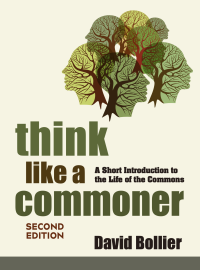The austerity agenda is often presented as inevitable, which is really just a way for corporatists and conservatives to dismiss any discussion or debate. “There are no alternatives!” they thunder. But as Co-operatives UK demonstrates in a brilliant new report, there are a growing array of highly practical alternatives that are both financially feasible and socially effective. They are known as multi-stakeholder co-operatives, or more simply as “social co-operatives.”
While most of us are familiar with consumer or worker coops, the social co-operative is a bit different. First, it welcomes many types of members – from paid staff and volunteers to service users and family members to social economy investors. While many coops look and feel like their market brethren, with a keen focus on profit and loss, social coops are committed to meeting social goals such as healthcare, eldercare, social services and workforce integration for former prisoners. They are able to blend market activity with social services provisioning and democratic participation, all in one swoop.
Pat Conaty is author of the report, “Social Co-operatives: A Democratic Co-Production Agenda for Care Services in the UK.” He explains how the legal and organizational structures of multi-stakeholder co-operatives – as well as their cultural ethos – generate all sorts of advantages. They can deliver services more efficiently than many conventional businesses. They are more adaptable and responsive than many government programs. And they invite active, inclusive participation by members in deciding how their needs shall be met -- and in contributing their own knowledge and energies.
The report examines best practices in co-operative health and social care services, and profiles the success of social coops in Italy, Japan, France and Spain, among other countries, as well as in Quebec, Canada.
The Italian experience with social coops is especially impressive. Since passage of a 1991 law that authorizes social co-operatives and provides public policy support for them, Italians have started 14,500 social co-operatives that employ 360,000 paid workers and rely on an additional 34,000 volunteer members. The typical coop has fewer than 30 worker-members, and provides services to the elderly, the disabled and those with mental illnesses. Some provide “sheltered employment” for people with disabilities and other vulnerable groups.
Currently social coops are providing services for nearly five million people in Italy. They bring in and spend 9 billion euros annually. Their survival rate after five years is 89 percent.
In Quebec, “solidarity co-operatives” have been building an alternative “social solidarity economy” since 1995. These coops are bridging the co-operative movement, trade unions and the public sector while meeting people’s needs in effective, compassionate ways. The chief focus of the Quebec movement, writes Conaty, is job creation and home care, but they are also being used for “rural regeneration” by helping save rural shops, post offices and social services.
What’s exciting about social coops is their ability to creatively blend commons-based practices with market activity – without letting market forces dominate the agenda. Moreover, they do not merely "administer services" in the style of a typical nonprofit; social coops are directed and accountable to their members.
“The social co-operative model turns the users of social care into partners, alongside the workforce, with both given an ownership stake in the business and a share in its success,” says Ed Mayo, Secretary General of Co-operatives UK, a British group that promotes the co-operative economy.
Why do social coops work? Clearly there are many factors ranging from enlightened public policies to national cultures and ethical commitments. But the idea of co-production is a powerful engine driving this social institution. As described by two British scholars, Sarah Carr and Catherine Needham:
“The term co-production is increasingly being applied to new types of public service delivery in the UK, including new approaches to adult social care. It refers to active input by people who use service, as well as – or instead of – those who have traditionally provided them. It emphasizes that the people who use services have assets, which can help to improve those services, rather than simply needs which must be met. These assets are not usually financial, but rather are the skills, expertise and mutual support that service users can contribute to public services.”
Needless to say, most markets and government bureaucracies can’t quite get their head around the idea of such participatory “associative democracy” and building alternative institutions that nurture participation. But as Henry Tam of the University of Cambridge explains:
“Inclusive communities are more effective forms of human association because they recognize the intrinsic value of enabling all their citizens/members/stakeholders to interact with each other as equals in deliberating how power is to be exercised by them, to further the good of each and all. This communitarian model builds directly on the development of co-operative thinking through the Owenites and cooperative democrats of the late 19th / early 20th century.”
Conaty’s report digs quite deeply into the key organizational, legal and financial challenges in establishing successful social coops – while pointing to available solutions. For example, new sorts of public policies are needed to support social coops as well as new types of financing, such as venture funding and social finance.
Given the role that social coops can play in rebuilding democratic culture while meeting urgent, unmet social needs, much more attention should be paid to the great promise of multi-stakeholder co-operatives. This report provides an important factual analysis for inaugurating a new conversation about an attractive, proven alternative.
Update: The Guardian has just published a solid article outlining the promise of community land trusts for dealing with London's acute shortage of affordable housing.










Recent comments